Ken Ware, NeuroPhysics Therapy Institute and Research Centre, Australia
NeuroPhysics Therapy (NPT) is a fascinating field that delves into the discrete functionality and behaviour of the human nervous system. It explores how our nervous system perceives and responds to the environment, and through the development and application of specialized techni [....] » Read More














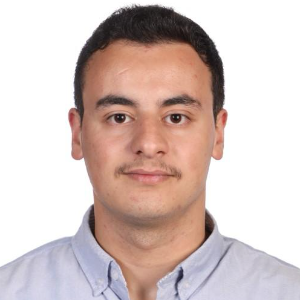
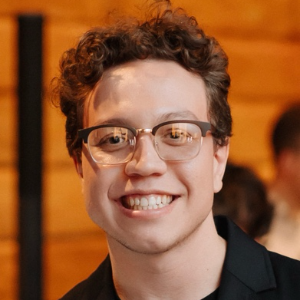




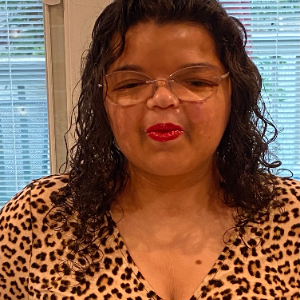










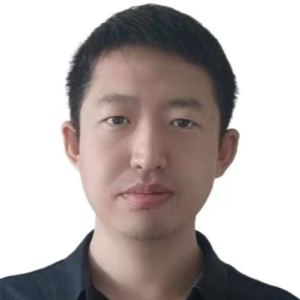







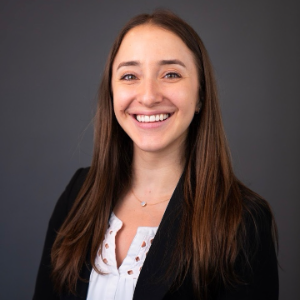


















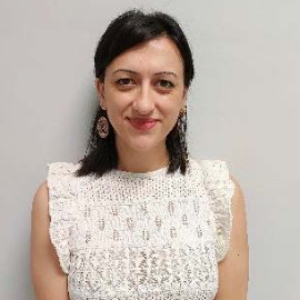












Title : Human understanding and machine intelligence: A systems neuroscience perspective
Yan M Yufik, Virtual Structures Research, Inc, United States
Aristotle’s “Metaphysics” starts with a pronouncement “Humans desire to understand”, establishing understanding capacity as the defining characteristic of human intellect separating humans from the other species. Throughout history, cognitive capacit [....] » Read More
Title : Cannabis/CBD for treating neurological disorders
Jag H Khalsa, GWU School of Medicine and Health Sciences, United States
Cannabis is the most used illegal drug in the world with an estimated 2.5% of the world’s population (180 million) using it regularly (World Drug Report 2017)1. Medicinal and/or recreational cannabis use is associated with significant health consequences) (WHO, 20162; Volko [....] » Read More
Title : 3DYNAFS-MBAFUS: A virtual lab of microbubble-amplified focused ultrasound for noninvasive treatments of neurodisorders
Jingsen Ma, Dynaflow, Inc, United States
Focused Ultrasound (FUS), especially when amplified by Microbubbles (MB), offers non-invasive options for treating deep-seated and brain tumors and other neurodisorders, by enabling targeted surgical ablation and/or local blood-brain-barrier opening (BBBO) for effective drug deli [....] » Read More
Title : Neural nanomedicine: Fighting stroke, improving stem cell delivery, healing nerves and using artificial intelligence
Thomas J Webster, Brown University, United States
Nanomedicine is the use of nanomaterials to improve disease prevention, detection, and treatment which has resulted in hundreds of FDA approved medical products. While nanomedicine has been around for several decades, new technological advances are pushing its boundaries. For exa [....] » Read More
Title : Novel stem cell therapy to boost recovery from ischemic brain injury
Xiaofeng Jia, University of Maryland School of Medicine, United States
Ischemic brain injury after Cardiac Arrest (CA) remains challenging with high mortality and disability and causes irreversible neurological dysfunction in over 90% of CA survivors. Current medical treatments do not effectively combat neuronal loss. Neural Stem Cell (NSC) engrafti [....] » Read More
Title : Intermittent hypoxic conditioning-induced exosome: Intervention for ischemic stroke treatment
Myoung-gwi Ryou, Tarleton State University, United States
Ischemic stroke is a leading cause of death and adult disability worldwide. Currently, the only FDA-approved treatment is tissue plasminogen activator (tPA). Over two decades ago, normobaric Intermittent Hypoxic Training (nIHT) was identified as beneficial for ischemia and reperf [....] » Read More
Title : A case of nitrous oxide induced vitamin B12 deficiency with secondary myelopathy
George Diaz, Memorial Healthcare Systems, United States
Objective: To present a unique case of nitrous oxide (NO2)-induced vitamin B12 deficiency with secondary myelopathy. Background: Nitrous oxide (NO2), commonly known as “laughing gas”, is frequently used as an anesthetic agent, but is also abused recreationally in t [....] » Read More
Title : Therapeutic efficacy of cinnamein in controlled cortical impact mouse model of TBI
Jit Poddar, Rush University, United States
Traumatic brain injury (TBI) remains a major health concern which causes long-term neurological disability particularly in war veterans, athletes and young adults in United States. Despite of intense clinical and research investigations, there is no effective therapy to cease the [....] » Read More
Title : Therapeutic inhibition of PI3K? attenuates neuronal endoplasmic reticulum stress improves functional recovery after traumatic brain injury in mice
Guohong Li, Penn State College of Medicine, United States
Traumatic brain injury (TBI) is a major cause of death and disability, often leading to persistent motor and cognitive deficits. Phosphoinositide 3-kinase γ (PI3Kγ), primarily expressed in immune cells, has been implicated in neuroinflammation in various neuropatholog [....] » Read More
Title : Neurochemical and behavioral effects of olanzapine in a high-risk schizophrenia mouse model
Sindhu Sriramoji Virdi, Rutgers University, New Jersey Medical School, United States
Schizophrenia is a mental disorder affecting behavior, cognition, and emotion. While schizophrenia is characterized by the dysregulation of dopamine in the brain, specifically the striatum, its physiology is undetermined. Olanzapine, an atypical antipsychotic, is commonly prescri [....] » Read More
Title : NF1-associated gliomas: Antioxidant treatments and spastin inactivation as possible therapeutic approaches
Cinzia Rinaldo, IBPM-CNR, Italy
Neurofibromatosis type 1 (NF1) is the most common tumor predisposition syndrome and glioma is one of the prevalent tumors associated with it. Gliomagenesis in NF1 patients results in a heterogeneous spectrum of neoplasms, ranging from low- to high-grade, that can occur throughout [....] » Read More
Title : miR-590-3p delivery via nanoparticle technology inhibits recurrent GBM tumor growth by targeting multiple oncogenic nodes downstream of TGFBR2
Sophie Sall, Kennedy Krieger Institute, United States
Glioblastoma (GBM) is the most common central nervous system cancer diagnosed in adults. Heterogeneous and aggressive in nature, GBM is often found to resist standard of care (SOC) treatment and is almost guaranteed to recur. Upon recurrence, treatment options are very limited an [....] » Read More
Title : Clinical characteristics and management practices of pediatric status dystonicus
Karissa Chesky, Baylor College of Medicine, United States
Objective: We present 20 cases of pediatric status dystonicus at a major pediatric center and describe their clinical course. Background: Status dystonicus (SD) is a rare, life-threatening neurological emergency characterized by continuous, severe episodes of general [....] » Read More
Title : Innovative sEEG based device for neural recordings, ablation and drug delivery into the brain
Guadalupe Zepeda, NeuroOne Medical Technologies, United States
Stereoelectroencephalography (sEEG) electrodes are routinely used to identify the epileptogenic zone (EZ) in patients with drug resistant epilepsy. The sEEG electrodes are FDA-cleared for temporary (<30 days) neural activity monitoring, recording and stimulation. Here we prese [....] » Read More
Title : Development of novel miR-dependent genome-editing Adeno-associated virus that selectively eradicates glioblastoma-initiating cells
Toru Kondo, Hokkaido University, Japan
Glioblastoma (GBM), one of the most malignant human cancers, frequently recurs despite multimodal treatment with surgery and chemo/radiotherapies. One of the reasons of why GBM recues is likely the existence of GBM-initiating cells (GICs) that have strong proliferative and tumori [....] » Read More
Title : Novel stress detection leveraging deep learning and multi-domain features on EEG signals
Prathyek Poojary, Cambridge Centre for International Research, United States
Stress is a very special state of being in that it can influence almost every bodily function and system in the most negative way, contributing to a wide range of health issues, from psychological disorders such as depression to physiological problems like indigestion. It has bee [....] » Read More
Title : In vitro efficacy studies of Bacopa monnieri and Rosemarinus officinalis to evaluate their neuroprotective and neurotrophic properties in the management of alzheimers Disease
Nidhi Gupta, CSIR-National Physical Laboratory, India
Background: Alzheimer's Disease (AD) treatment modalities address symptoms aleviation through neurotransmitter modulation. Ayurveda, utilizing plant-derived compounds with neuroprotective properties, offers a promising avenue. This study explores integrating&nb [....] » Read More
Title : Serum interleukins- 2,6 and tumor necrosis factor -alpha levels in children with attention deficit hyperactivity disorder
Rishabh Singh, VMMC and Safdarjung Hospital, India
Background: ADHD is a behavioural disorder with symptoms of inattention, impulsivity and hyperactivity. A low dopaminergic and noradrenergic activity is noted in ADHD. The etiopathogenesis is not completely understood. A physiological role of IL- 6 on neuronal stem cell migration [....] » Read More
Title : Right-sided ataxia in adolescent craniocervical chordoma with mass effect on the brain stem: A case-report
Amanda Brand, Washington Avenue Pediatrics, United States
Introduction: Chordomas are rare, locally aggressive tumors which arise from embryological remnants of the notochord. Found in the craniocervical junction (C1-C2), mobile spine, and sacrum, they are particularly uncommon in pediatric and adolescent patients, especially those whic [....] » Read More
Title : Neuroprotective strategies and cell-based biomarkers for manganese-induced toxicity in human neuroblastoma (SH-SY5Y) cells
Jack Rogers, Massachusetts General Hospital, United States
Manganese (Mn) is an essential heavy metal in the human body, while excess Mn leads to neurotoxicity, as observed in this study, where 100 μM of Mn was administered to the human neuroblastoma (SH-SY5Y) cell model of dopaminergic neurons in neurodegenerative dise [....] » Read More
Title : A case report of full term newborn with large intracranial hemorrhage surviving complex interventions of craniectomy and acute peritoneal dialysis in the neonatal period
Karen Obillo Calibuso, Armed Forces of the Philippines Victoriano Luna Medical Center, Philippines
In the Philippine Pediatric Society Registry, there were 27 cases of Intracerebral with Intraventricular hemorrhage and 8 cases of Acute Kidney Injury with Acute Tubular Necrosis under 28 days of age from 2006-2022 that were discharged. However, there were no data on procedures s [....] » Read More
Title : The impact of physical guidance on motor learning in children with cerebral palsy
Elham Azimzadeh, Shahid Beheshti University, Iran (Islamic Republic of)
Children with cerebral palsy (CP) have weak physical abilities and their limitations may have an effect on performing everyday motor activities. One of the most important and common debilitating factors in CP is the malfunction in the upper extremities to perform motor skills and [....] » Read More